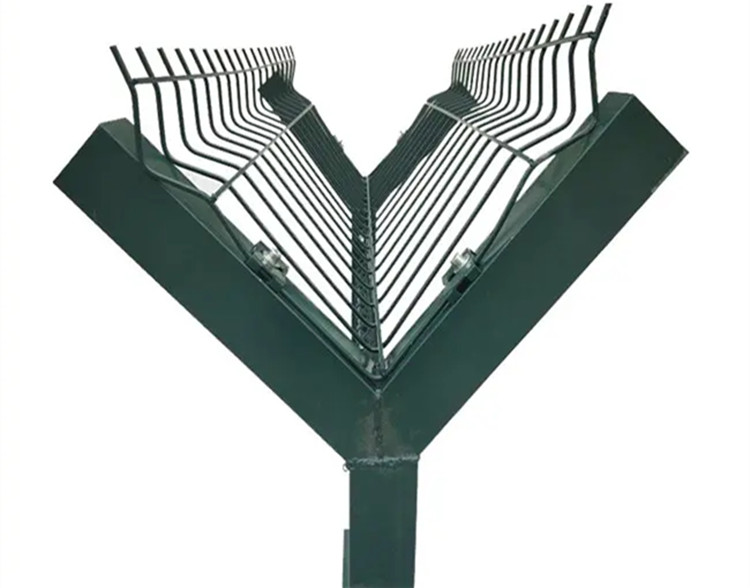Οκτ . 12, 2024 22:44 Back to list
CE Certification for Hinge Joint Fencing Solutions and Compliance Standards
CE Certification for Hinge Joint Fencing Enhancing Safety and Standards
In the realm of agricultural and industrial fencing, hinge joint fences have gained significant popularity for their durability and effectiveness. These fences, characterized by their unique construction where the vertical wires are linked with hinge-like joints, provide a robust solution for animal containment and property demarcation. However, as the demand for quality fencing increases, so does the necessity for stringent safety standards. This is where CE certification comes into play.
What is CE Certification?
CE marking is a certification that signifies that a product conforms to health, safety, and environmental protection standards set by the European Union (EU). It is a mandatory conformity marking for products sold within the European Economic Area (EEA) and serves as a passport for the product to be marketed in Europe. The CE mark is crucial for ensuring that products meet the essential requirements of EU directives and regulations, promoting consumer safety and environmental protection.
The Importance of CE Certification for Hinge Joint Fencing
1. Quality Assurance CE certification assures that hinge joint fencing products meet high-quality standards. Manufacturers must adhere to specific guidelines and pass rigorous testing before receiving certification. This process ensures that the materials used in the fencing are durable and safe for use in agricultural and industrial settings.
2. Safety Compliance Fencing is often installed in environments where safety is paramount, such as farms, construction sites, and public spaces. CE certification helps to ensure that the fencing can withstand environmental stressors, including strong winds, animal pressure, and other external factors. This compliance minimizes the risk of accidents and injuries that may arise due to faulty fencing.
3. Market Access For manufacturers and suppliers looking to enter or expand within the European market, CE certification is essential. Without the CE mark, products cannot be legally marketed in many European countries. This certification opens doors to new markets and boosts the manufacturer’s credibility.
4. Consumer Confidence Consumers are increasingly concerned about the products they purchase and their associated safety standards. CE certification acts as a reassurance for buyers, providing them with the confidence that they are investing in a product that has been tested and meets recognized safety standards. This trust can be a deciding factor in their purchasing decision.
The Certification Process
ce certification hinge joint fence

Obtaining CE certification for hinge joint fencing involves several steps
1. Product Assessment The first step involves assessing the fencing product against the relevant EU directives. This includes understanding the specific fitness for use, durability, and safety measures required.
2. Testing The product undergoes rigorous testing in accredited laboratories. This testing evaluates various factors such as tensile strength, corrosion resistance, and overall performance under stress.
3. Technical Documentation Manufacturers are required to compile technical documentation that details the design, manufacturing process, and testing results of the fencing. This documentation must be maintained and made available for inspection.
4. Declaration of Conformity Once the product meets all necessary requirements, the manufacturer issues a Declaration of Conformity. This document confirms that the fencing complies with the EU regulations and can be marked with the CE label.
5. Market Surveillance Even after obtaining certification, manufacturers must ensure ongoing compliance with safety standards. Market surveillance may occur to ensure that products continue to meet CE requirements over time.
Conclusion
As the fencing market continues to evolve, CE certification serves as a cornerstone for ensuring safety, quality, and market access. For hinge joint fences, this certification is not just a regulatory requirement; it represents a commitment to excellence and consumer safety. By investing in high-quality, certified products, manufacturers not only protect their reputation but also contribute to the overall safety and welfare of their customers and end-users.
In the end, CE certification for hinge joint fencing is an invaluable asset that enhances the product's value in a competitive market, ensuring that it meets the rigorous demands of modern consumers and safety standards alike.
-
Durable Hot-Dip Galvanized Farm Field Wire Fence | Farm Security
NewsAug.01,2025
-
Temporary Fencing Solutions-Anping County Xingzhi Metal Wiremesh Products Co.,Ltd
NewsJul.31,2025
-
Hop Dipped Galvanized / PVC Coated Temporary Fence - Anping County Xingzhi Metal Wiremesh Products Co., Ltd.|Durable Temporary Fencing&Cost-Effective Security Solutions
NewsJul.31,2025
-
Hop Dipped Galvanized / PVC Coated Temporary Fence-Anping County Xingzhi Metal Wiremesh Products Co., Ltd|durable temporary fencing&corrosion-resistant solutions
NewsJul.31,2025
-
Temporary Fencing Solutions - Anping County Xingzhi Metal | Galvanized PVC Coated Fences
NewsJul.31,2025
-
358 Anti-Climb Welded Wire Mesh Fence - High Security, Durable
NewsJul.31,2025



